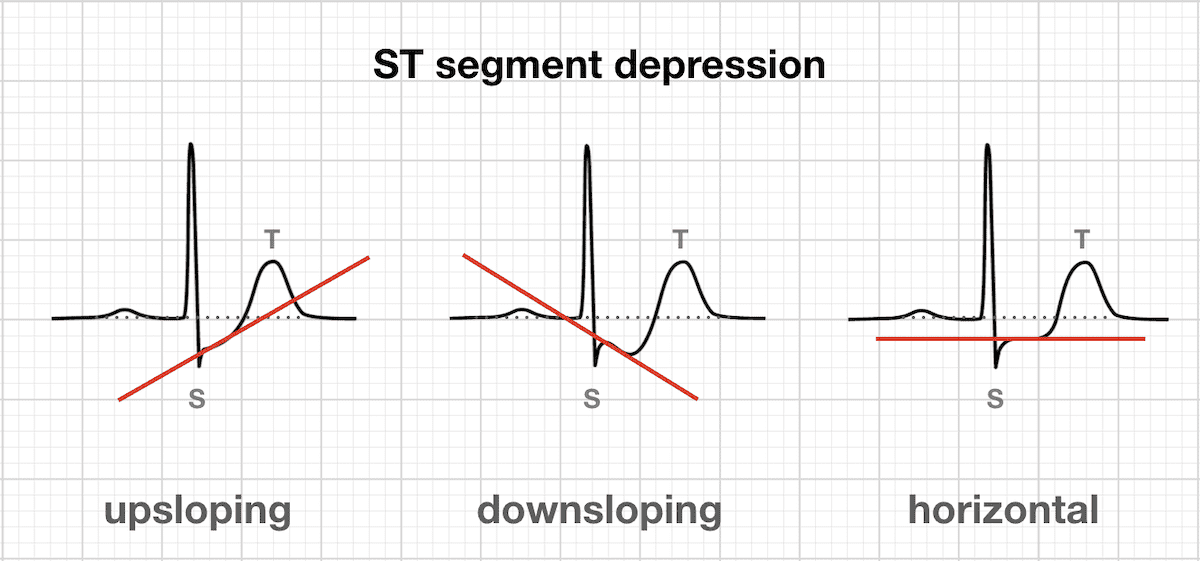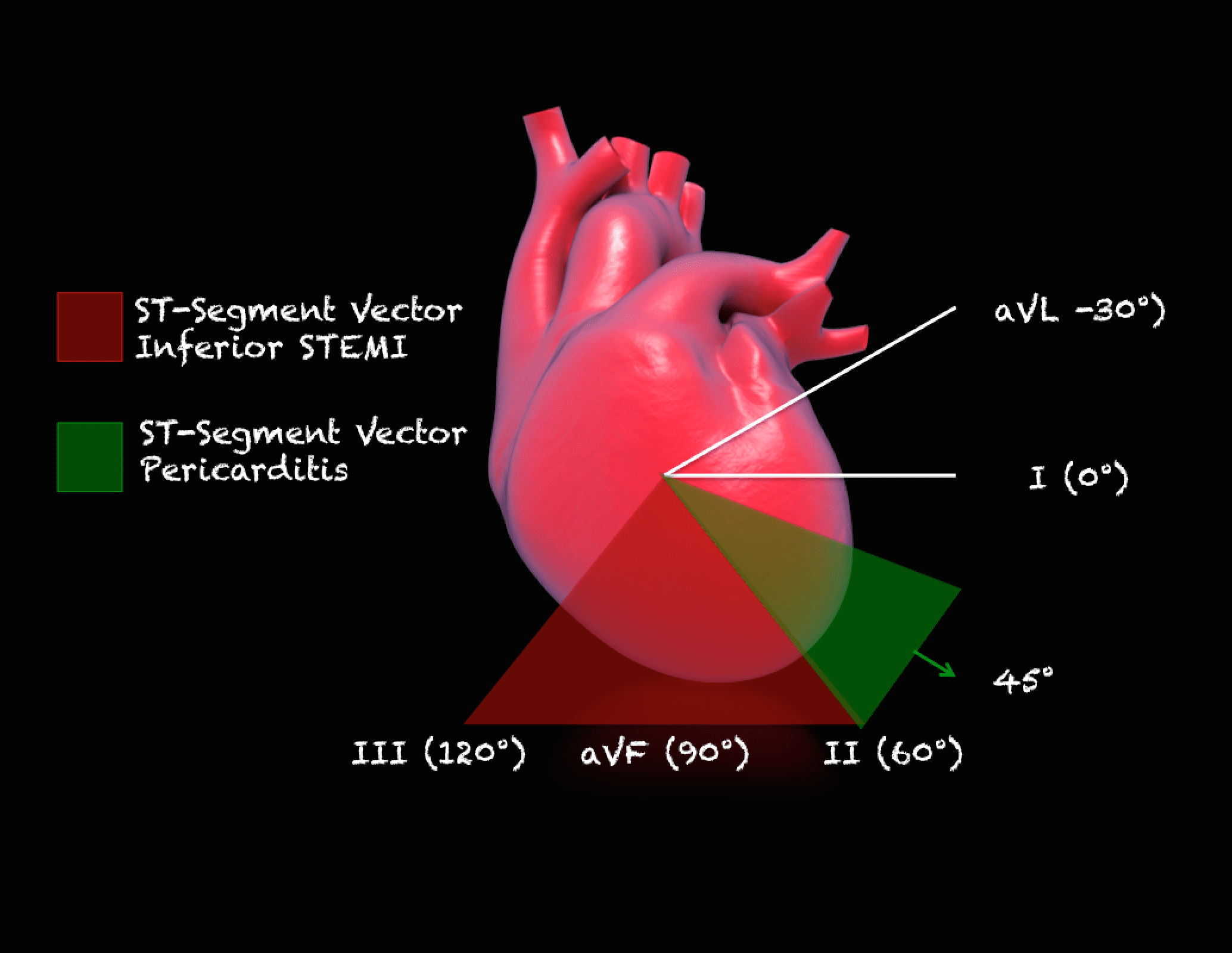
EKG Diagram Labeled
Consideration of typical EKG patterns in STEMI and STEMI mimickers. STEMI -EKG CRITERIA. •Diagnostic elevation (in absence of LVH and LBBB) defined as: - New ST elevation at J point in at least 2 contiguous leads -in leads V2-V3, men >2mm, women > 1.5mm -in other chest leads or limb leads, > 1mm. Alternative causes of ST-T changes.

Diagnosis dan Tatalaksana ACS STEMI Dengan Kasus Kedokteran Caiherang
1. Introduction. ST-segment elevation acute myocardial infarction (STEMI) is a not uncommon diagnosis in the emergency department (ED). Approximately 5% of all ED visits in the United States in 2000 were for chest pain, with a range of 5% to 15% of those patients ultimately found to have an acute myocardial infarction (AMI) [1].The American College of Cardiology/American Heart Association has.

STEMIs do not present all the time with STelevation. Earlier ECG changes can be identified
ECG (EKG) in acute STEMI (ST Elevation Myocardial Infarction) The ECG is the key to diagnosing STEMI. ECG criteria for STEMI are not used in the presence of left bundle branch block or left ventricular hypertrophy (LVH) because these conditions cause secondary ST-T changes which may mask or simulate ischemic ST-T changes. ST segment elevation is measured in the J-point and the elevation must.

Diagnosis dan Tatalaksana ACS STEMI Dengan Kasus Kedokteran Caiherang
ST-segment elevation myocardial infarction (STEMI) is a clinical syndrome defined by the presence of myocardial ischemic symptoms, electrocardiographic (ECG) findings of new ST-segment elevations in two continuous leads or new left bundle branch block, and subsequent detection of biomarkers indicative of myocardial injury. 1 It is estimated.

Evolusi EKG pada Stemi Akut dengan Gelombang Q Patologis Haruskah Menunda Terapi ? Jurnal
Myocardial Ischaemia. Ed Burns and Mike Cadogan. Mar 16, 2022. Home ECG Library. This page covers the ECG signs of myocardial ischaemia seen with non-ST-elevation acute coronary syndromes (NSTEACS). ST-elevation and Q-wave myocardial infarction patterns are covered elsewhere: LMCA occlusion, Anterior STEMI, Lateral STEMI, Inferior STEMI, Right.

Cómo reconocer un STEMI en un EKG de 12 derivaciones ECCtrainings
STEMI hospitalization increased in women aged 18 to 34 and 35 to 44 years and it was accompanied by an increase in traditional and nontraditional female‐specific or female‐predominant CVD risk factors in both age subgroups. Among women aged 18 to 55 yearse admitted with STEMI, in‐hospital mortality has not changed over the past 12 years.

Myocardial Ischaemia • LITFL • ECG Library Diagnosis
Transcript. The evolution of a STEMI: even though ischaemia is the first thing that happens, it's not the first change that you will see on the ECG. On a normal ECG, the ST segment is on the baseline. As soon as a patient is experiencing a myocardial infarction, the ST segment will elevate within minutes. For this reason, you will not see the T.

stemi vs nstemi nursing Google Search Emergency nursing, Cardiac nursing, Cardiology nursing
Patients with STEMI (STE-ACS) always display ST elevations but they may also display ST depressions and/or T-wave inversions. Patients with NSTE-ACS (NSTEMI, unstable angina), on the other hand, may only display ST depressions and/or T-wave inversions. STE-ACS (ST Elevation Acute Coronary Syndrome) & STEMI (ST Elevation Myocardial Infarction)

Sgarbossa STEMI 25 File
Keywords: Evolusi, STEMI, Infark miokard, Elektrokardiografi, PCI primer Abstract. Infark miokard akut (IMA) masih merupakan salah satu penyebab kematian tertinggi di unit gawat darurat. Selama infark miokard akut yang disertai dengan ST elevasi (STEMI), elektrokardiogram (EKG) biasanya mengikuti perkembangan perubahan, dimulai dengan gelombang.

STEMI and STEMI Equivalents, i.e. Who Needs the Cath Lab Now! — Taming the SRU
Anterior myocardial infarction carries the poorest prognosis of all infarct locations, due to the larger area of myocardium infarct size. A study comparing outcomes from anterior and inferior infarctions (STEMI + NSTEMI) found that compared with inferior MI, patients with anterior MI had higher incidences of: In-hospital mortality (11.9 vs 2.8%)

Stemi Adalah Penyakit Homecare24
An acute ST-elevation myocardial infarction (STEMI) is an event in which transmural myocardial ischemia results in myocardial injury or necrosis.[1] The current 2018 clinical definition of myocardial infarction (MI) requires the confirmation of the myocardial ischemic injury with abnormal cardiac biomarkers.[2] It is a clinical syndrome involving myocardial ischemia, EKG changes and chest pain.

Evolution of a STEMI Ausmed
STEMI Heart Attack. An ST-elevation myocardial infarction (STEMI) is a type of heart attack that mainly affects your heart's lower chambers. They are named for how they change the appearance of your heart's electrical activity on a certain type of diagnostic test. STEMIs tend to be more severe and dangerous compared to other types of heart.

Stemi
Introduction. Acute ST-elevation myocardial infarction (STEMI) is a major cause of mortality worldwide. The rapid restoration of blood flow in the occluded culprit coronary artery with primary percutaneous coronary intervention (PCI) will prevent heart failure, preserves ventricular function and reduces mortality [1-4].The cause of STEMI is erosion or rupture of an atherosclerotic plaque.

Evolution of Acute STEMI NCLEX Quiz
Patients with established cardiovascular disease who develop COVID‐19 have high rates of morbidity and mortality. SARS‐CoV‐2 has been shown to promote inflammation and thrombosis. 1 Early single‐center series reported patients with COVID‐19 presenting with ST‐segment elevation on the ECG, and some of whom had obstructive coronary disease and thrombosis whereas others did not. 2, 3.

STEMI case examples wikidoc
Introduction. Despite increase in the risk and complexity, the success and safety of percutaneous coronary interventions (PCI) has continued to improve. 1,2 Currently, the PCI success rates exceed 90% overall, and 98% to 99% in elective cases, underscoring the need to review the current postprocedural protocols. 3,4 Three main drivers for prolonged length of stay include postprocedure bleeding.

Inferior STEMI vs Pericarditis REBEL EM Emergency Medicine Blog
Background: While ST-Elevation Myocardial Infarction (STEMI) door-to-balloon times are often below 90 min, symptom to door times remain long at 2.5-h, due at least in part to a delay in diagnosis. Objectives: To develop and validate a machine learning-guided algorithm which uses a single‑lead electrocardiogram (ECG) for STEMI detection to speed diagnosis.